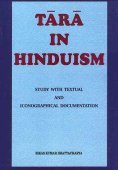Kamakhya, Kāmākhyā, Kama-akhya, Kāmākhya: 13 definitions
Introduction:
Kamakhya means something in Buddhism, Pali, Hinduism, Sanskrit, the history of ancient India. If you want to know the exact meaning, history, etymology or English translation of this term then check out the descriptions on this page. Add your comment or reference to a book if you want to contribute to this summary article.
Kamakhya has 11 English definitions available.
Languages of India and abroad
Sanskrit dictionary
[Deutsch Wörterbuch]
Source: Cologne Digital Sanskrit Dictionaries: Böhtlingk and Roth Grosses Petersburger WörterbuchKāmākhyā (कामाख्या):—(kāma + ākhyā) f. dass. ebend.
--- OR ---
Kāmākhyā (कामाख्या):—Nomen proprium einer Göttin [Kalikāpurāṇa 61 im Śabdakalpadruma] eine der Durgā geheiligte Localität in Assam; s. u. kṣobhaka .
Source: Cologne Digital Sanskrit Dictionaries: Sanskrit-Wörterbuch in kürzerer FassungKāmākhya (कामाख्य):——
1) n. Nomen proprium eines Tīrtha [Mahābhārata 3,82,185.] —
2) f. ā = kāmākṣi [VP.².,5,85.] [Pañcadaṇḍacchattrabandha] [Indische studien von Weber 15,395.fgg.]
Sanskrit, also spelled संस्कृतम् (saṃskṛtam), is an ancient language of India commonly seen as the grandmother of the Indo-European language family (even English!). Closely allied with Prakrit and Pali, Sanskrit is more exhaustive in both grammar and terms and has the most extensive collection of literature in the world, greatly surpassing its sister-languages Greek and Latin.
See also (Relevant definitions)
Starts with: Kamakhyadevi, Kamakhyadoshavivarana, Kamakhyatantra.
Ends with: Shrikamakhya.
Full-text (+112): Siddhakameshvari, Kamarupa, Kshobhaka, Kameshvari, Kamakuyatantra, Uttarakamakhyatantra, Shaktapitha, Kamakshi, Dipavant, Parvati, Shringata, Sirihatta, Vishala, Pragjyotisha, Yogini, Niladri, Nilagiri, Nilakuta, Purnagiri, Udhika.
Relevant text
Search found 23 books and stories containing Kamakhya, Kama-akhya, Kāma-ākhyā, Kāmākhyā, Kāmākhya; (plurals include: Kamakhyas, akhyas, ākhyās, Kāmākhyās, Kāmākhyas). You can also click to the full overview containing English textual excerpts. Below are direct links for the most relevant articles:
Brihad Bhagavatamrita (commentary) (by Śrī Śrīmad Bhaktivedānta Nārāyana Gosvāmī Mahārāja)
Verse 2.1.35-37 < [Chapter 1 - Vairāgya (renunciation)]
Verse 2.1.93-94 < [Chapter 1 - Vairāgya (renunciation)]
Verse 2.1.101 < [Chapter 1 - Vairāgya (renunciation)]
Vishnudharmottara Purana (Art and Architecture) (by Bhagyashree Sarma)
4. The Viṣṇudharmottara-purāṇa and Temple Architecture of India < [Chapter 6 - Modern Relevance of Different Art Forms and Architecture]
The Mother Goddess Kamakhya < [March 1948]
The Background of Assamese Culture < [October 1950]
The Concept of Shakti in Indian Thought < [January – March, 1978]
Lord Hayagriva in Sanskrit Literature (by Anindita Adhikari)
Origin of Tantra < [Chapter 6]
Hayagrīva in the Yoginī Tantra (Introduction) < [Chapter 6]
Yoginī Tantra < [Chapter 6]
The Skanda Purana (by G. V. Tagare)
Chapter 59 - The Departure of Ghaṭotkaca to Prāgjyotiṣa < [Section 2 - Kaumārikā-khaṇḍa]
Chapter 60 - The Birth of Barbarīka < [Section 2 - Kaumārikā-khaṇḍa]
Chapter 3 - Pārvatī Goes to Kāñcī for Penance < [Section 3a - Arunācala-khaṇḍa (Pūrvārdha)]
Animal Kingdom (Tiryak) in Epics (by Saranya P.S)
Related products

